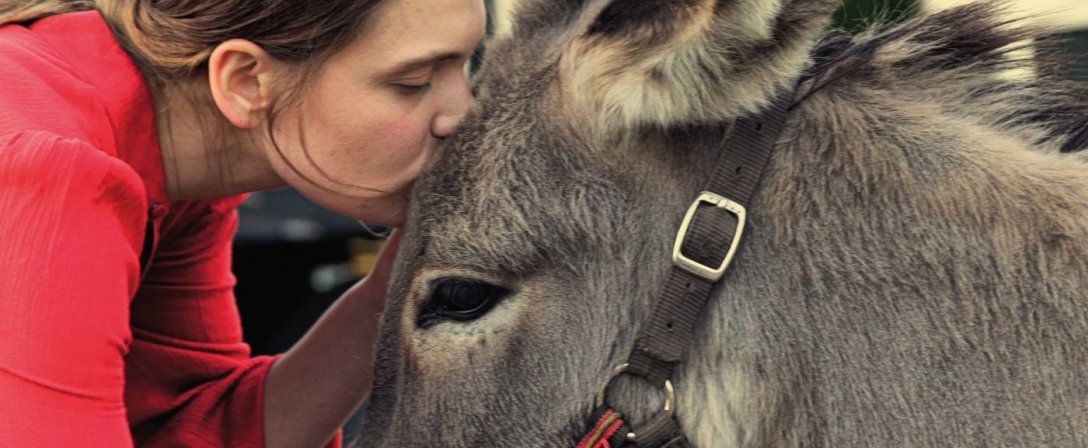Directed by Jerzy Skolimowski. Written by Ewa Piaskowska and Jerzy Skolimowski
A modern fable about nature’s relationship with mankind, EO stars a donkey who goes on a journey across Poland, encountering the full spectrum of human behavior along the way. The donkey doesn’t say much, but he sure has a way of bringing it out in people.
Eo’s a circus animal, and he has an obvious bond with his trainer and scene partner Kasandra (Sandra Drzymalska). Skolimowski directs their circus act with great artistry, circling the performance with impenetrable darkness and filling the arena with a dramatic red light that evokes both an intimacy and danger. An otherworldly connection, and a touch of foreshadowing.
The bubble quickly bursts and the less glamorous reality of Eo and Kasandra becomes clear. Their small circus is struggling to stay afloat, and barely does the curtain call end before bankruptcy is declared. Into a nondescript truck Eo goes, to both his and Kasandra’s great sadness.
It marks the beginning of a nomadic existence for the donkey, who’s marginally employed by various people before he cuts loose, impelled to keep searching for Kasandra. The story Skolimowski tells is about how the world reacts to Eo, showing us kind doctors and brute hooligans. How we treat defenseless beasts of burden is Skolimowski’s primary concern, and he doesn’t take a positive view. They’re at best a curiosity, most likely a tool for some capitalistic purpose, and when they can’t perform that function, they’re meat.
EO not an angry movie despite this, it’s more elegiac and closer to a kind eye that sees the sentient being that animals are for just that: Beings with acute feelings, intelligence and a dignity of their own.
On the flipside, the people of Skolimowski’s movie, be they good, bad, or somewhere in between like most people are, feel more two-dimensional and reduced to a storytelling function. The silent donkey has loads more personality than any real person in EO and Skolimowski directs his actors to play their parts with a heightened artifice. A little more dramatic with bigger gesticulation, more intense scowls, dumber pratfalls, etc.
The simplified representation of everyone involved makes EO feel like something of a modern fable, a story meant to shine a light on how our relationship to the natural world and elements have gone awry.
EO is best when Skolimowski steers clear of people and with long, silent passages lets us take in the natural world by looking over Eo’s shoulder. An encounter with a mortally wounded fox in the woods followed by a beautiful dawn where Eo lumbers over a hill tells us, with no words spoken, of both the cruelty and resilience of the natural world.
The world’s a strange and mysterious place, especially for a donkey, and through its silent observation, Skolimowski shows us how people sometimes out-animal the animals. Funny, disturbing, moving at times, EO’s a remarkable film if solely due to its technical execution, but its visual artistry, clarity and depth of feeling, and novel premise keeps it engaging even if it slides towards a sermon by movie’s end.
